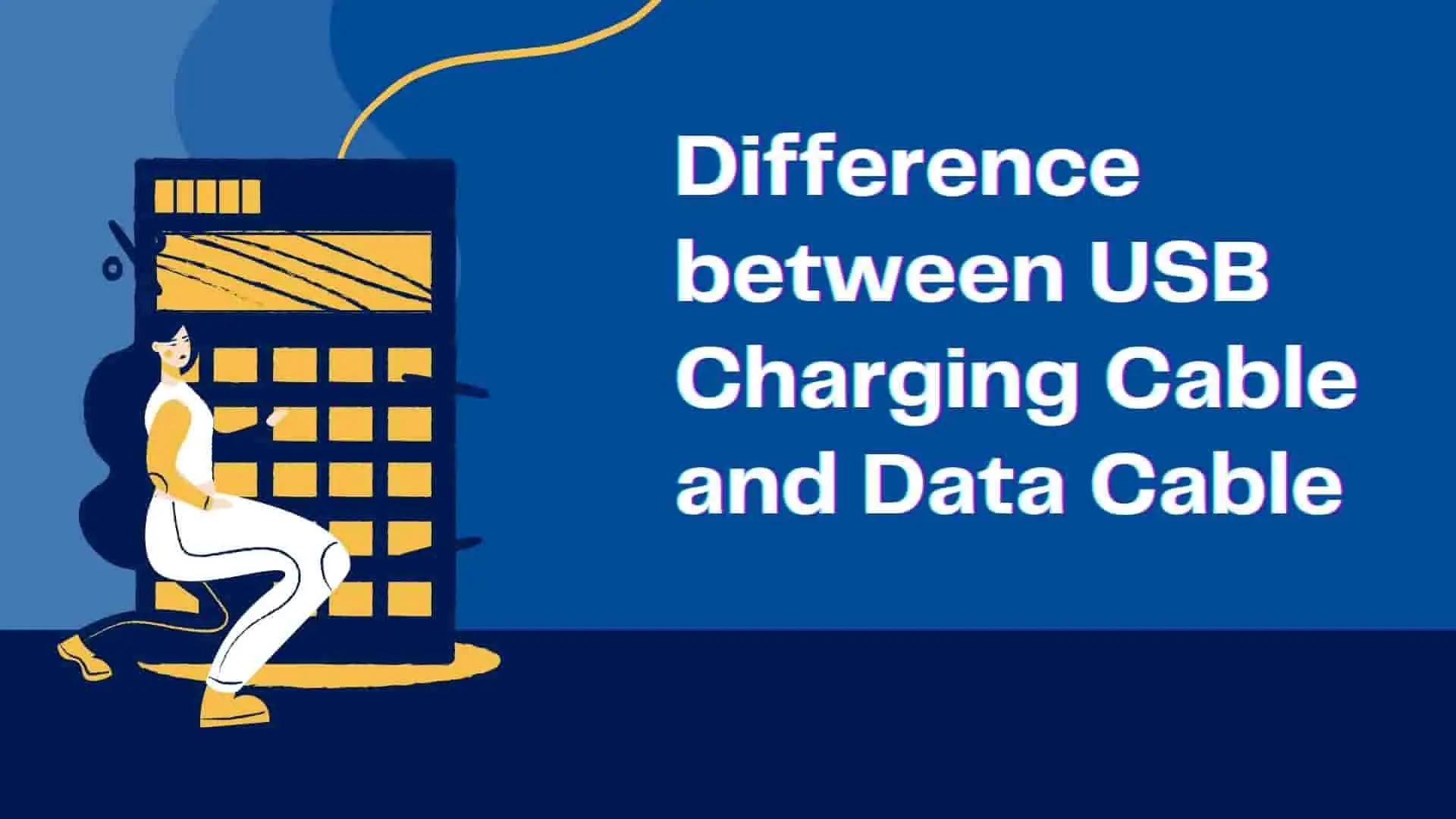How to Fix Discord Error: 'Installation Has Failed'

USB is an abbreviation for Universal Serial Bus. It is standard and has replaced many of the connectors that were previously available.
It is also one of the most popular cable types available for charging phones, and cameras, and transferring data between computers and peripheral devices such as phones, cameras, scanners, and printers. In the market, there are two types of USB cables. The first is a USB Charging Cable, and the second is a USB Data Cable.
Let's look at each of them in-depth:
A USB charging cable is one that only carries power signals. They only function to provide power to the device, which is their only purpose. They lack data signals, and are unable to communicate with USB controllers, and so on.
The USB Implementers Forum (UIF) does not recognize it. As a result, we can conclude that it is not part of the USB standard.
There are only a few charging cables on the market. They are thinner than standard USB data cables because they only have two wires (Red and Black) inside. Consider it similar to house wiring, which has Red and Black wires that are only used to carry current.
Those two wires are :
They are not commonly found on the market. When you go to the market and buy some cheap cables, say $1.00, you might get a charge-only cable. This does not imply that all low-cost cables are charge-only cables. You might be able to find a higher-quality charge-only cable at a nice price. Some argue that power-only USB cables would be a cost-cutting measure for the manufacturer.
Use Case:
These cables may be found in public places such as airports, hospitals, and train stations. Actually, you might not know whether the cable is a data cable or a charging cable.
However, having a charging cable in this location is sufficient from a security standpoint, and from a malware standpoint because this cable will be found to be used by many users. As a result, in this location, you make a trade-off for increased security.
USB charging cables are those that are used for both data and charging, as they provide both power and data. We are familiar with this cable because we mostly used it in day-to-day life.
The data cable is a standard four-wire USB cable with two wires for power and two for data. They are:
USB Data cables have data signals and can handshake with a USB controller and seek extra power because here the data wires are used.
Let's differentiate between the USB Charging Cable and USB Data Cable in tabular format
| USB Charging Cable | USB Data Cable |
| They are designed for charging purposes only. | They are designed for charging as well as for data transfer. |
| They are 2 wires in USB Charge Only Cable | They are 4 wires in the USB data cable. |
| They are thinner than USB Data cables because they only have a few lines of wires inside the cable. | They are thicker than USB Charge Only Cable because they have more liens of wires inside the cable. |
| They are not widely available in the market | They are widely available in the market |
| They are employed in locations where security is a top priority. | They are used for generally available and come with your smartphone. |
| They cannot be used to connect the phone and computer for data transmission. | They can. |
| You may have labelled the ends of USB cables as "Charging Only" However, this is not the case in the vast majority of situations. | You may have labelled the ends of USB cables as "Charging Only." However, this is not the case in the vast majority of situations. |
| Thicker wires and bigger connectors than data cables. |
Relatively thinner wires and smaller connectors |
| May not handle high power output or charge certain devices quickly. | It may not be possible to charge at all, or it may be possible to charge only partially. |
| Used to Charge electronic devices such as cellphones, tablets, and other portable devices. |
Used to transfer data between devices, such as files between a PC and a smartphone. |
| Often used with USB power adapters or charging stations to charge numerous devices simultaneously. |
Used for data sharing and charging via a computer's USB port. |
FAQ:
Ans: Some USB cables are labelled "Charging Only" for Charging Cords, although this is not the case with all charging cables.
As a result, the only way to tell if it's a charging cable or a data cable is to manually check it with a computer as shown below.
To begin, plug one end into a computer and the other into a mobile phone. If you discover a Phone as a storage device in Computer File Manager then the cord you're using is a USB data cable. If your phone does not display in the storage device, your cable is a charge-only cable.

Ans: No you cannot make the charging cable act as a data cable because it is not designed to work with data.
Ans: Yes, a USB data cable can be used for both power and data. If you like to have it only for charging and not for data then you can simply put a resistor between D+ and D- ports.

